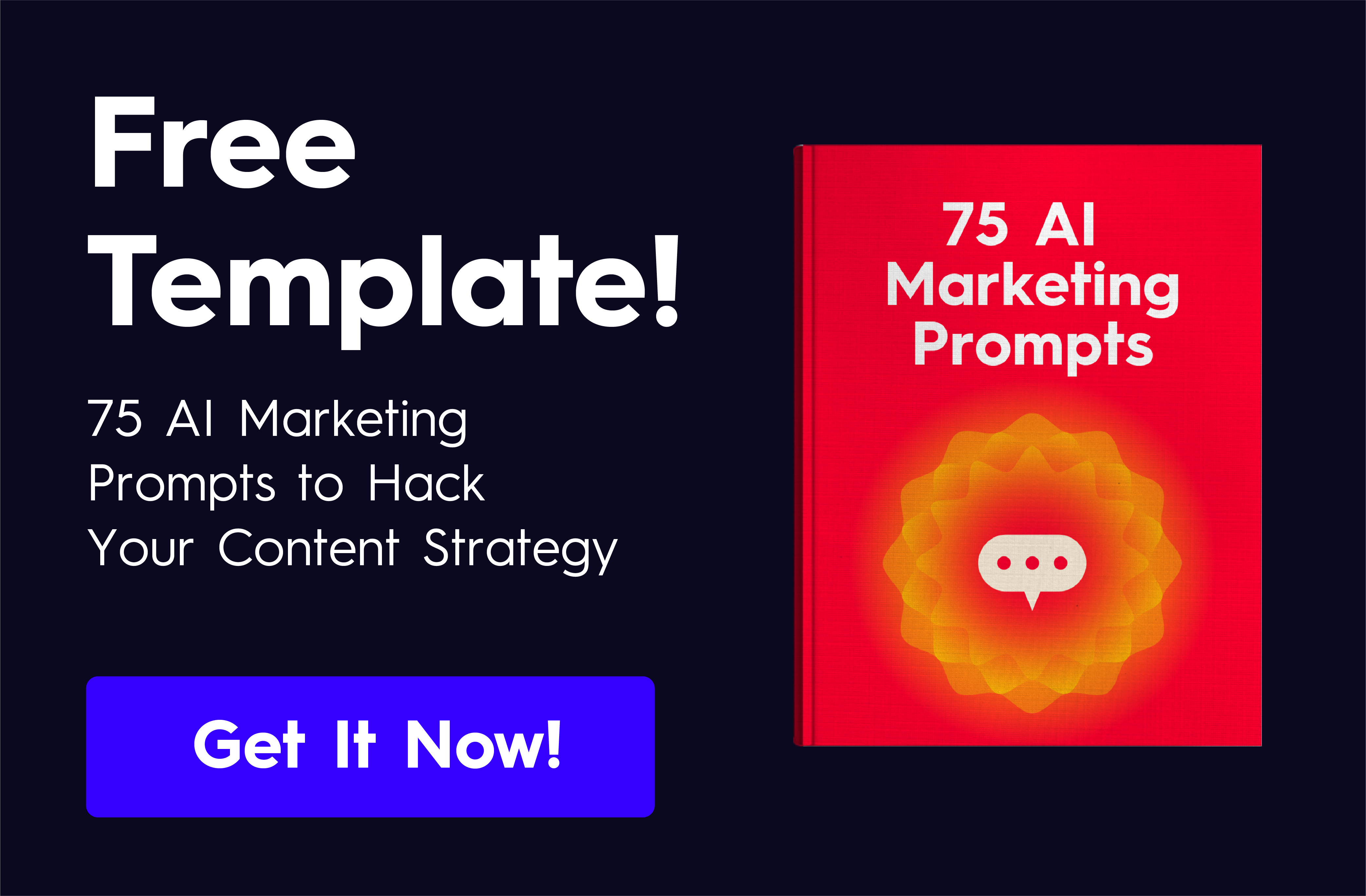AI can be an incredible tool to overhaul your marketing, and we’re seeing it help more and more brands hit their goals. But like any new invention, it’s important to understand the tech’s abilities, limitations, and applications. That is why it’s so important to draft helpful AI marketing guidelines to help your team use the tools effectively and avoid any potential ethical issues (especially if you’re working with outside content creators). But how do you craft strong guidelines? Take a seat, and we’ll walk you through what to include to cover your bases.
5 Steps to Write AI Marketing Guidelines
Remember: Whether you’re a two-person team or a global department with a massive team of content creators, the more guidance you provide, the more confidently your team can apply AI in effective ways. You may need to include additional information that is unique to your brand, but in general, these are the steps to create practical and actionable guidelines.

1) Identify your use cases.
The number one question we hear about AI is “What can I use it for?” For marketers, there is a long laundry list of use cases, including:
- Customer Segmentation and Targeting
- Personalization
- Chatbots and Virtual Assistants
- Predictive Analytics
- Marketing Research
- Content Creation (Brainstorming, Outlining, Writing, Research)
- SEO
- Design
- Email Marketing Automation
- Social Media Management
- Ad Targeting and Optimization
- Customer Relationship Management (CRM)
- A/B Testing and Optimization
- Fraud Detection and Security
- Etc.
Although there are many things AI can do, it’s important to have a detailed conversation about its true purpose within your organization. This vision may change as new tools become available, but in general, you want to clearly outline how you’re using AI and to what end.
Tip: If you’re not sure how AI can be used within your organization, here are 30 ways you can use AI to hack your marketing and 50 tools to help you do it.
2) Establish best practices.
For each use case, identify best practices that users should adhere to. You should also clearly define what the AI can and can’t do in the context you’re using it. (This sets realistic expectations for users and prevents misuse or overreliance on AI.)
For example, you may provide particular tips or AI prompts to assist with each use case, from content brainstorming and optimization to model training and data analysis.
Tip: One of the biggest barriers to AI use is a lack of education. You may want to encourage individuals or teams to experiment with different tools and share their learnings/best practices to improve everyone’s abilities.
3) Address ethical concerns.
Depending on the use, industry, or audience, AI can pose legitimate ethical concerns you may not even think about.
For example, if you’re using AI to synthesize a client’s brief, could their proprietary information be in jeopardy? If you’re using AI to generate content, how can you ensure it’s not plagiarized?
For each use case, flag any potential concerns. Some things to think about:
- Transparency: Do you need to disclose that you’re using AI for certain things? How will your audience respond? Are there any potential issues?
- Fairness: How can you mitigate bias in AI systems? How can you audit for bias?
- Privacy: How will you ensure AI systems comply with relevant privacy laws and regulations? You might need to implement privacy-enhancing technologies to protect personal data.
- Accountability: Who will be using AI in your organization? What are the roles and responsibilities of those stakeholders?
These guidelines may grow and evolve as you encounter issues, but it’s important to flag and address any potential issues before they become a larger problem.
Tip: Create a clear system to address ethical concerns so that people always know who they can raise those issues with.
5) Provide helpful examples.
Anytime you’re assembling guidelines, it’s important to include real-world examples that accurately depict how people can and should implement the tools. (This always helps content creators better understand the guidelines.)
Tip: Prompts are one of the most helpful ways to interact with AI programs effectively. If you’re trying to build a strong content strategy, see our roundup of 75 free AI prompts to do it. (Feel free to include them in your own guidelines if they’re helpful.)
Most Importantly, Ask for Feedback
Even if your team has been at the forefront of AI since it came on the scene, you still need to sanity-check your guidelines to make sure they’re comprehensive and make sense to others. (If you have employees who are particularly nervous or intimidated by AI, the guidelines should not only help them understand but feel empowered to use it effectively.)
Ask relevant stakeholders for their opinions, especially regarding the ethical implications or issues you may run up against.
Tip: Your AI guidelines are not a one-and-done thing. As you continue to expand your capabilities, you will want to regularly review and update them to reflect any new changes or best practices.
What to Do Once You Have Your AI Marketing Guidelines
Guidelines are an invaluable resource to help your team, but you also need more ways to keep your organization at the forefront of the AI evolution.
- Know what the experts are saying about the future of AI. There is a lot of conjecture about what the future looks like, so dive into the latest trends and predictions.
- Learn more about AI marketing. Not everyone has the same level of expertise. If you’re just starting out, see our guide to everything you need to know about AI marketing.
- Take inspiration from other people. There are so many clever ways to use AI to improve your marketing. Take a look at these 10 AI marketing case studies to see how other brands have used it to get phenomenal results.
No matter your industry, AI is changing everything quickly. Regularly assess your tech stack to make sure you’re using the most relevant tools for your needs, and lean on support if you need it. (If you’re on the hunt for an AI-savvy agency, find out how we can help you.)
Most importantly, stay flexible and attentive to the ways AI is evolving. The more you keep tabs, the easier it is to stay ahead of the competition.





